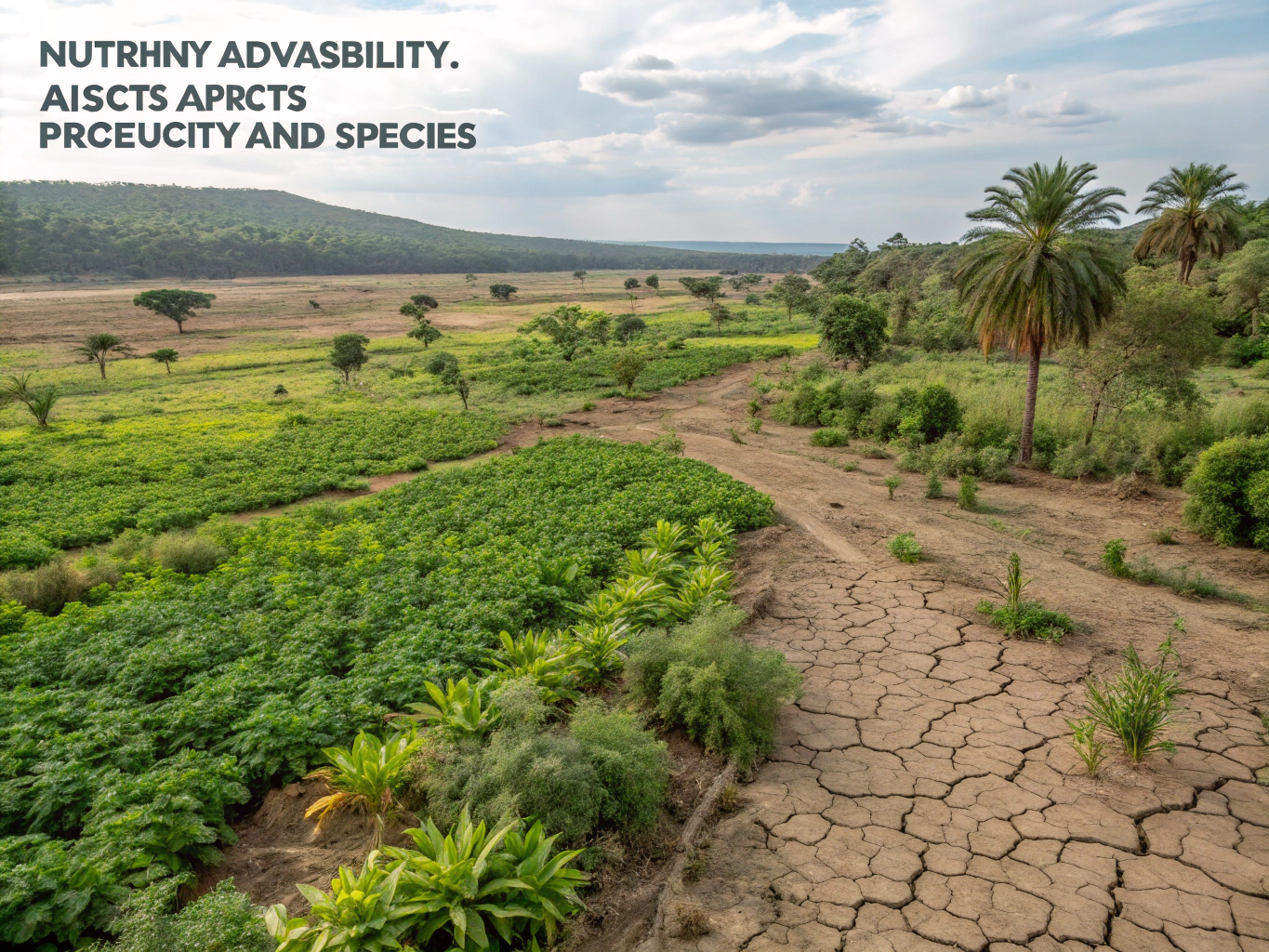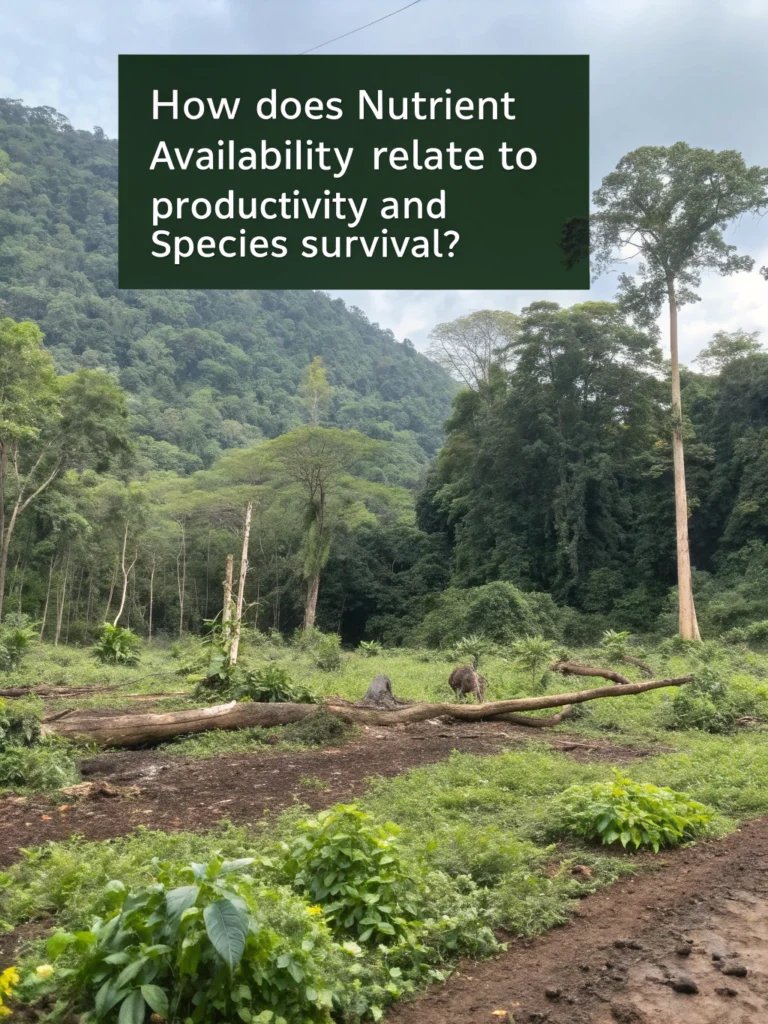How does nutrient availability relate to productivity and species survival?
When we talk about ecosystems, one pressing question arises: how does nutrient availability relate to productivity and species survival? Understanding this connection is vital for maintaining ecological harmony and biodiversity.
Nutrient Availability and Ecosystem Productivity
Nutrient availability and ecosystem productivity are intertwined. Ecosystems hinge on essential nutrients like nitrogen, phosphorus, and potassium. These nutrients act as the building blocks for plant growth, influencing productivity levels in various habitats. When nutrient levels are high, plants thrive, resulting in enhanced growth and biomass production.
Conversely, low nutrient levels often lead to nutrient limitations in ecosystems. For example, in many aquatic environments, nitrogen and phosphorus are often in short supply, ultimately impacting plant and algae growth. This limitation often translates to decreased productivity, affecting the entire food web—from primary producers like plants to herbivorous and carnivorous animals.
Species Survival and Nutrients
Another critical aspect of nutrient availability is its impact on species survival and nutrients. All organisms rely on essential nutrients to function optimally. For instance, herbivores need to consume plant matter rich in nutrients to sustain their energy and health. Predators, in turn, depend on the herbivores they consume.
When nutrient levels drop, this can lead to a decline in plant biomass and, consequently, a reduction in food sources for herbivores. The knock-on effect is that predators must travel further or expend more energy to find food, a situation that can threaten their survival.
The Impact of Nutrients on Biodiversity
The availability of nutrients also plays a pivotal role in biodiversity. The impact of nutrients on biodiversity is significant; richly nutrient-dense environments tend to support diverse plant and animal species, creating complex ecosystems. The diverse flora, in turn, provides various habitats and food sources, promoting a more extensive range of animal species.
However, when nutrient levels become imbalanced (either too high or too low), this can lead to ecological issues, such as algal blooms in aquatic environments, which deplete oxygen levels and harm aquatic life. This highlights the importance of maintaining an equilibrium in nutrient levels to sustain biodiversity.
Nutrient Cycles and Ecological Balance
Nutrient cycles and ecological balance are vital components of ecosystem health. Nutrients constantly cycle through organisms, soil, and water. For instance, through processes like decomposition, nutrients from dead organisms return to the soil, ready to be utilized by new plant growth.
The delicate nature of these nutrient cycles underscores their importance in promoting ecosystem health and nutrient levels. When these cycles are disrupted, either by pollution or habitat destruction, it can lead to catastrophic consequences for the ecosystem.
How Nutrients Affect Productivity in 2025 and Beyond
Looking forward to 2025 and beyond, understanding how nutrients affect productivity is more crucial than ever. As climate change and human activities impact ecosystems, monitoring nutrient levels will be essential for conserving biodiversity and ecosystem functions.
For example, strategies to mitigate nutrient runoff from agriculture can enhance water quality and prevent dead zones in oceans and lakes. It will be vital to develop sustainable practices that nurture nutrient cycles while preserving ecosystem health.

FAQs
Q: How do nutrient limitations impact animal species?
A: Nutrient limitations can reduce food availability for herbivores, indirectly affecting predators reliant on them.
Q: What is the importance of broken nutrient cycles?
A: Disruptions in nutrient cycles can lead to imbalances, harming biodiversity and overall ecosystem productivity.
Q: How can we maintain nutrient balance in ecosystems?
A: Sustainable agricultural practices, pollution control, and habitat preservation efforts can help maintain nutrient balance.
Q: Why is understanding nutrient availability crucial for future ecosystems?
A: With ongoing environmental changes, understanding nutrient dynamics will be vital for conservation and restoration efforts.
For anyone looking to enhance their productivity in their professional lives, check out the AI for Productivity eBook + Checklist: Supercharge Your Efficiency in 2025. It provides strategies to optimize your time and resources effectively.
Also, if you or someone you know is looking to boost focus and organizational skills, consider the ADHD Productivity Power Pack: Ebooks, Guides, Checklists, Workbook & Tools to Master Focus, Time Management & Organization. It includes valuable resources that'll help navigate productivity challenges.
Understanding how does nutrient availability relate to productivity and species survival will continue to be at the forefront as we strive towards a sustainable future. Let's keep it real, keep it fresh, and keep it engaging!

